Vitex (Vitex agnus-castus) Profile
Written by Iris
Aug 13 2021
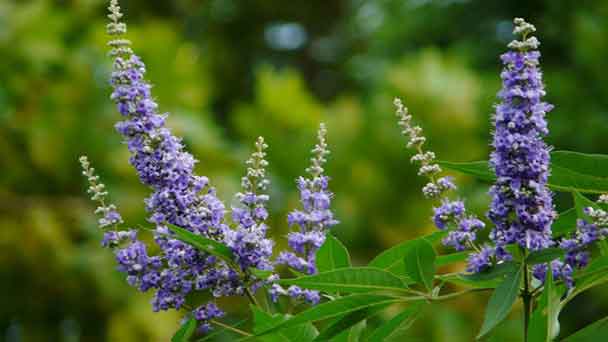
Vitex Agnus-castus is a deciduous shrub that grows to 8 to 20 feet tall and 6 to 20 feet wide. The leaves are palmately compound, facing each other, and have five to seven dark green leaflets. Lanceolet leaflets are four to eight inches long and two to four inches wide. From summer to fall, this pure tree produces beautiful inflorescences ranging from bright blue to lavender.
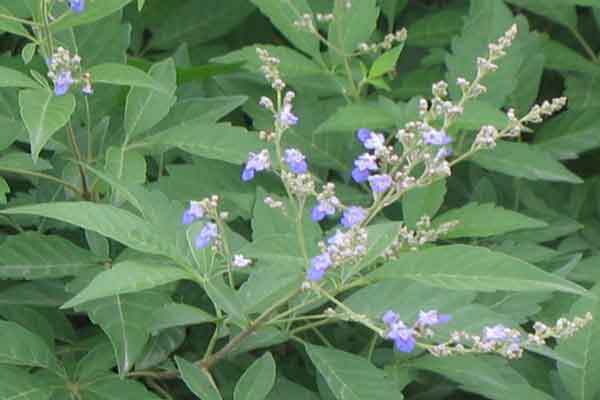
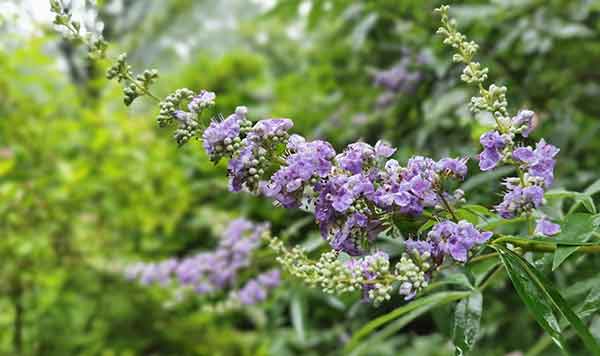
New stems will bend easily, whereas old stems will resist being bent. Softwood stems should snap in response to bending, and these are the stems you need for propagation. Remove the lower leaves from your stem, dip the cut end in rooting hormone, and then set it into a soilless potting medium.
Roots should develop in around 4 to 6 weeks, at which point you can remove the plastic bag or container and transplant the cutting to a larger pot. Allow these new plants to develop over the coming months, planting the tree outside in spring.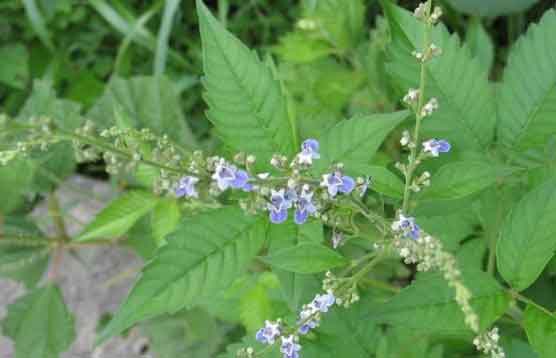
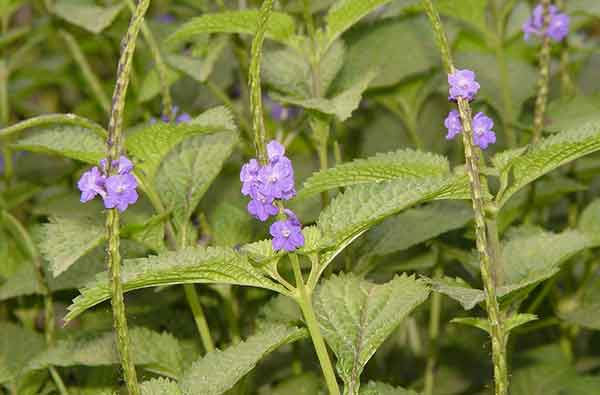
'Abbeville Blue' grows 6 feet tall with a similar spread. It has deep blue flowers on 12- to 18-inch spikes.
'Alba' has white flowers. It is a large plant, growing to 15 feet with a 20-foot spread.
'Shoal Creek' is a 15-foot-tall plant with purple-blue flowers and leaves that have good resistance to fungal spots.
'Blue Puffball' is a great small shrub, growing only 3 feet tall with delicate blue flowers.
'Rosa Ann' is a 15-foot plant with heavily scented pink flowers.
Smaller cultivars for potting include Blue Diddley (grows to 6 feet) and Blue Puffball (grows to 3 feet).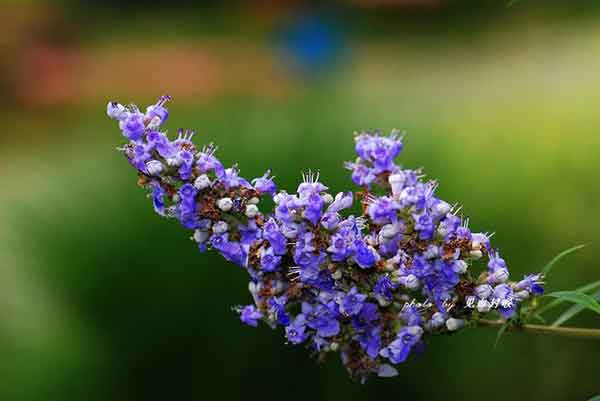
Thysanoptera, also known as thrips will attack the Vitex. These little pests suck on the stems. Use a systemic insecticide to kill them. Or spray them with Neem oil. B.T.W. not all thrips are bad some are actually beneficial. Read this post on gardening know-how.
Vitex (Vitex agnus-castus) Companion Plants
Vitex makes a great companion when planted with the Mississippi-Medallion-winning, pink-flowering Sioux and white-flowering Natchez crape myrtles.
This area is mostly drought tolerant plants - coreopsis, gaillardia, geum, perovskia, nepeta, salvias, and penstemons. It's a large bed anchored on one end by a maple so the Vitex will go toward the other end with a water feature (haven't quite decided on a pond or birdbath) in between.
Vitex (Vitex agnus-castus) PictureVitex (Vitex agnus-castus) InfoEcological Habits of Vitex (Vitex agnus-castus)Vitex (Vitex agnus-castus) Distribution AreaHow to Grow and Care for Vitex (Vitex agnus-castus)Uses of Vitex (Vitex agnus-castus)Varieties of Vitex (Vitex agnus-castus)
Vitex (Vitex agnus-castus) Picture

Vitex (Vitex agnus-castus) Info
| Botanical Name | Vitex agnus-castus |
| Common Name | Vitex,Chastetree |
| Plant Type | Deciduous shrub |
| Mature Size | 8-10 ft. tall; 5-8 ft. spread |
| Sun Exposure | Full sun |
| Soil Type | Loose, well-drained soil |
| Soil pH | Acidic to slightly alkaline (5.6 to 7.5) |
| Bloom Time | Mid-summer |
Ecological Habits of Vitex (Vitex agnus-castus)
Vitex agnus-castus grows best when planted in loose, well-drained soil, but can tolerate clay or sandy soils. Plant in either full or reflected sun and be sure to water monthly. Chaste tree can tolerate heat well, but is semi-hardy, tolerating temperatures as low as 10 - 20oF. This species is resistant to Texas Root rot, a pathogenic fungus that causes plants to wilt and die.Vitex (Vitex agnus-castus) Distribution Area
Vitex rotundifolia, commonly known as beach vitex, is a low, woody, perennial shrub with branches that can run for many meters. It is native to Asia, including China and Japan, and also to Oceania, including Australia and Papua New Guinea.
How to Grow and Care for Vitex (Vitex agnus-castus)
How to Grow Vitex (Vitex agnus-castus)
- With Seeds
- With Cuttings
New stems will bend easily, whereas old stems will resist being bent. Softwood stems should snap in response to bending, and these are the stems you need for propagation. Remove the lower leaves from your stem, dip the cut end in rooting hormone, and then set it into a soilless potting medium.
Roots should develop in around 4 to 6 weeks, at which point you can remove the plastic bag or container and transplant the cutting to a larger pot. Allow these new plants to develop over the coming months, planting the tree outside in spring.

How to Care for Vitex (Vitex agnus-castus)
- Light
- Soil
- Water
- Temperature and Humidity
- Fertilizer
- Pruning

Uses of Vitex (Vitex agnus-castus)
Vitex (Vitex agnus-castus) has great uses for both landscaping and medicinal purposes. Also known as monk's pepper, the extracts from this tree are recognized as effective treatments for symptoms of premenstrual dysphoric disorder, and premenstrual syndrome. In landscapes, Vitex (Vitex agnus-castus) is an excellent summer color shrub or tell tree, and is often used for individual display or as a patio tree. When planting in xeriscape landscapes, chaste trees are best in mini-oasis zones. The plant can become messy once the leaves begin to fall, and the pleasantly scented inflorescence often attracts butterflies and bees.Varieties of Vitex (Vitex agnus-castus)
Several cultivars of vitex are widely sold:'Abbeville Blue' grows 6 feet tall with a similar spread. It has deep blue flowers on 12- to 18-inch spikes.
'Alba' has white flowers. It is a large plant, growing to 15 feet with a 20-foot spread.
'Shoal Creek' is a 15-foot-tall plant with purple-blue flowers and leaves that have good resistance to fungal spots.
'Blue Puffball' is a great small shrub, growing only 3 feet tall with delicate blue flowers.
'Rosa Ann' is a 15-foot plant with heavily scented pink flowers.
Smaller cultivars for potting include Blue Diddley (grows to 6 feet) and Blue Puffball (grows to 3 feet).

Vitex (Vitex agnus-castus) Common Pests/Diseases
The Vitex tree is not susceptible to insects and or diseases. There have been known cases of powdery mildew with this tree. Usually caused by overwatering or too much rainfall in the area. Treat it with fungus control if you find a white powdery substance on the foliage. Click on the following Insects and diseases on plants for what it looks like on other plants.Thysanoptera, also known as thrips will attack the Vitex. These little pests suck on the stems. Use a systemic insecticide to kill them. Or spray them with Neem oil. B.T.W. not all thrips are bad some are actually beneficial. Read this post on gardening know-how.
Vitex (Vitex agnus-castus) Companion Plants
Vitex makes a great companion when planted with the Mississippi-Medallion-winning, pink-flowering Sioux and white-flowering Natchez crape myrtles.
This area is mostly drought tolerant plants - coreopsis, gaillardia, geum, perovskia, nepeta, salvias, and penstemons. It's a large bed anchored on one end by a maple so the Vitex will go toward the other end with a water feature (haven't quite decided on a pond or birdbath) in between.
Latest Updated
- Benefits of Bugleweed - 7 Science-backed Health Benefits
- Bugleweed Dangers & Side Effects - Is It Poisonous?
- How to Plant Evergreen Trees - What You Should Know
- When to Plant Evergreens - Grow Guide for Evergreen Trees
- 12 Wonderful Evergreen Shrubs for Your Garden
- 12 Popular Evergreen Plants with Pictures for Beginners
- When And How To Prune A Lilac Bush Like a Pro
- How to Grow & Care for Lilac Vine (Hardenbergia Violacea)
- Japanese Lilac Tree (Syringa Reticulata) Care & Propagation Guide
- Shumard Oak Pros and Cons - What to Know
Popular Articles
- Winter maintenance of Antirrhinum Majus
- How to Grow Terminalia Mantaly Tree
- How to Grow and Care for Crossostephium Chinense
- How to grow Antirrhinum Majus in spring
- Peristeria Elata (Dove Orchid) Profile: Info & Care Guide
- Underwatered Snake Plant (Sansevieria Trifasciata) - Signs And How To Fix
- How to Care for Brazilian Jasmine Plant (Mandevilla Sanderi)
- How to Grow & Care for Graptopetalum Purple Delight in Summer
- Rosa Chinensis (China Rose): Plant Growing & Care Tips
- How to Care for Baby Sun Rose (Aptenia Cordifolia)